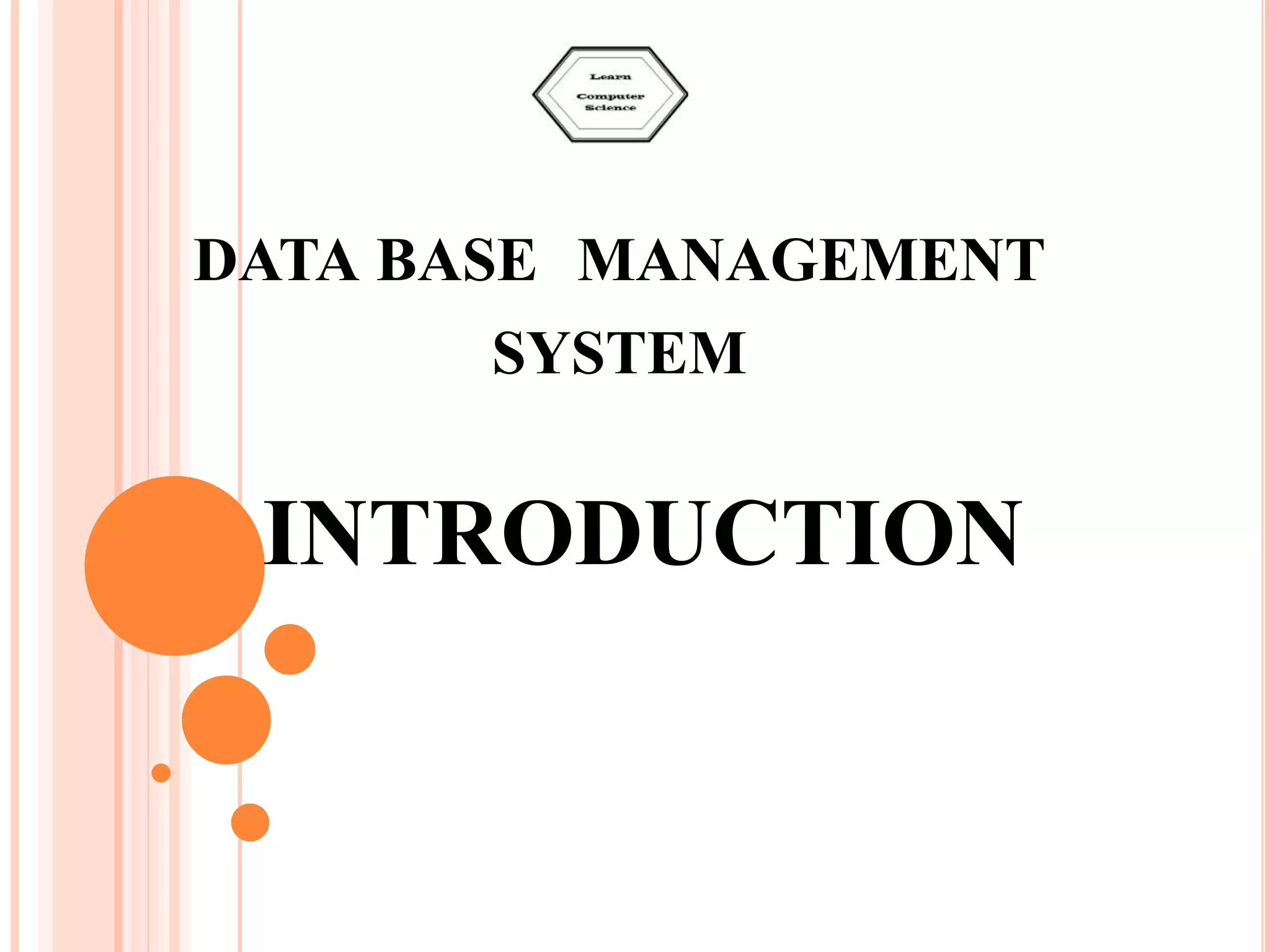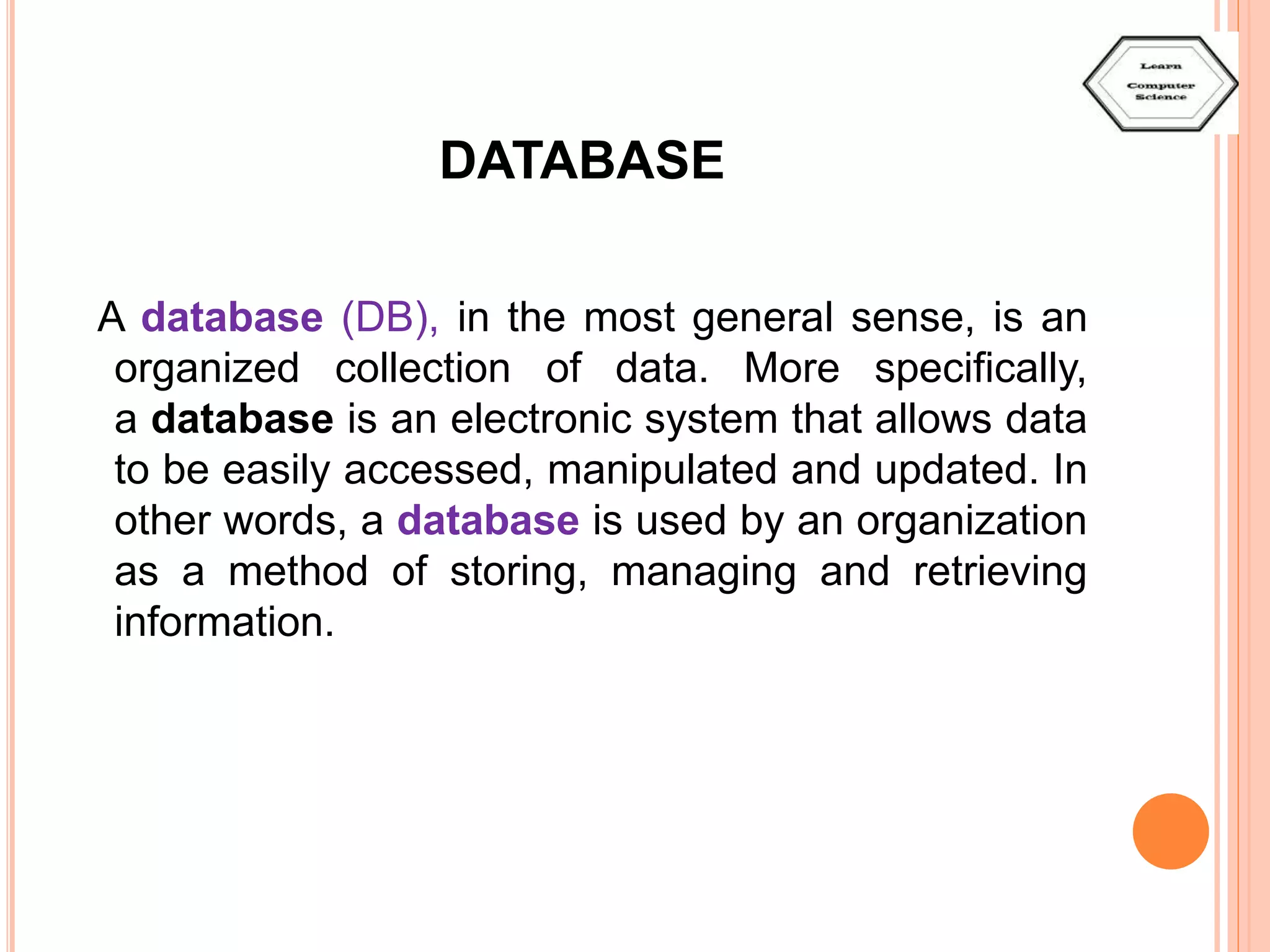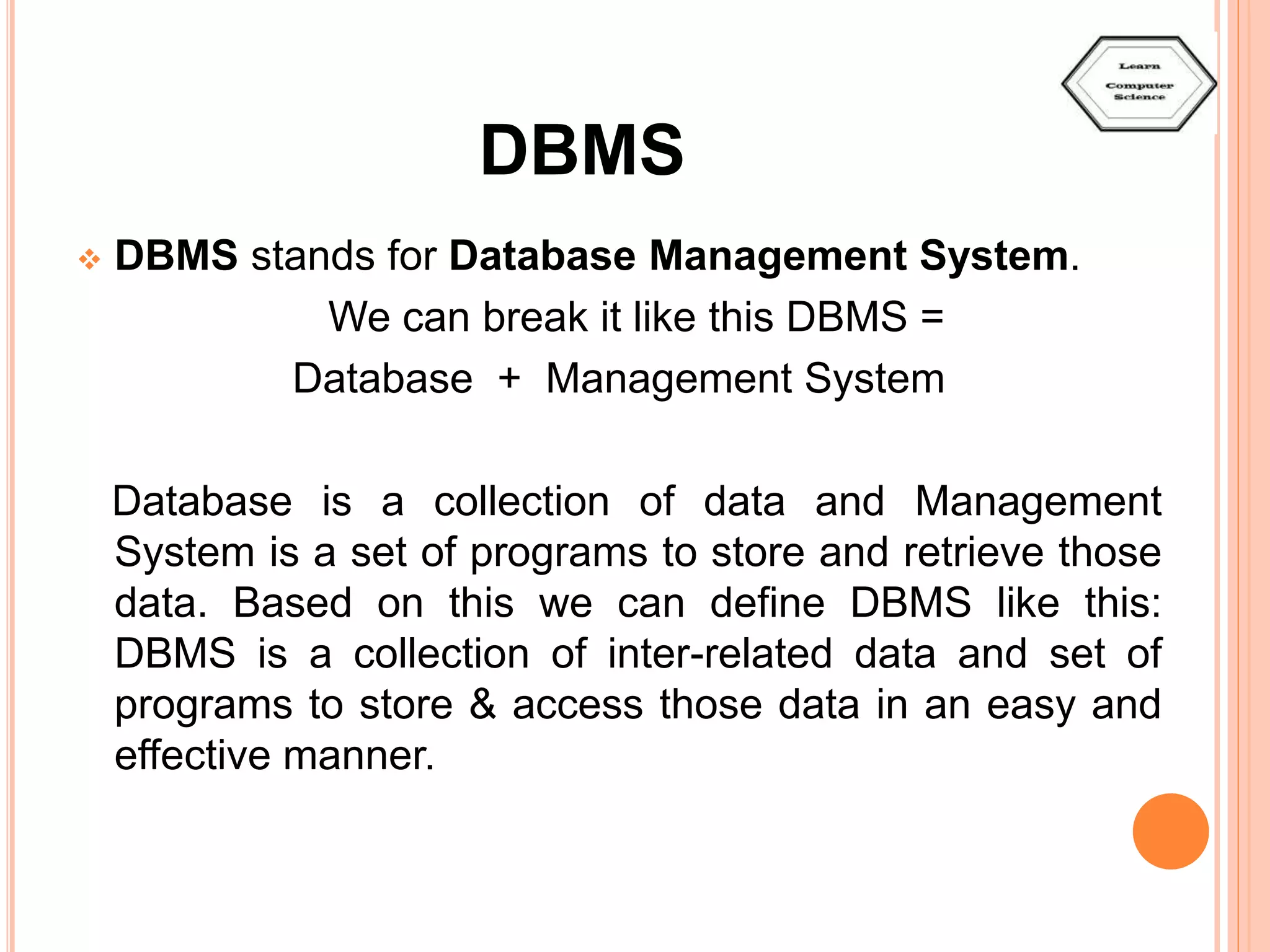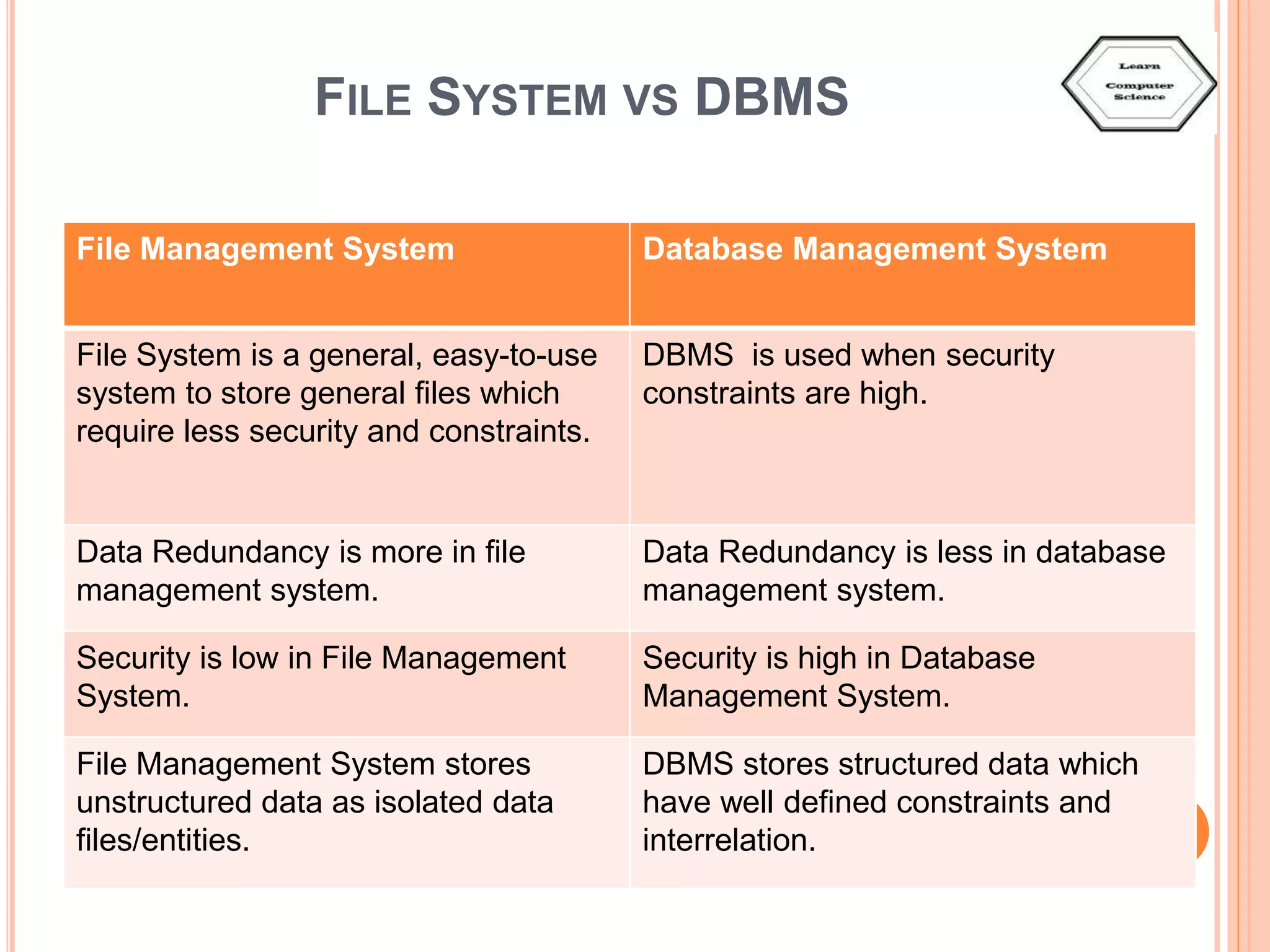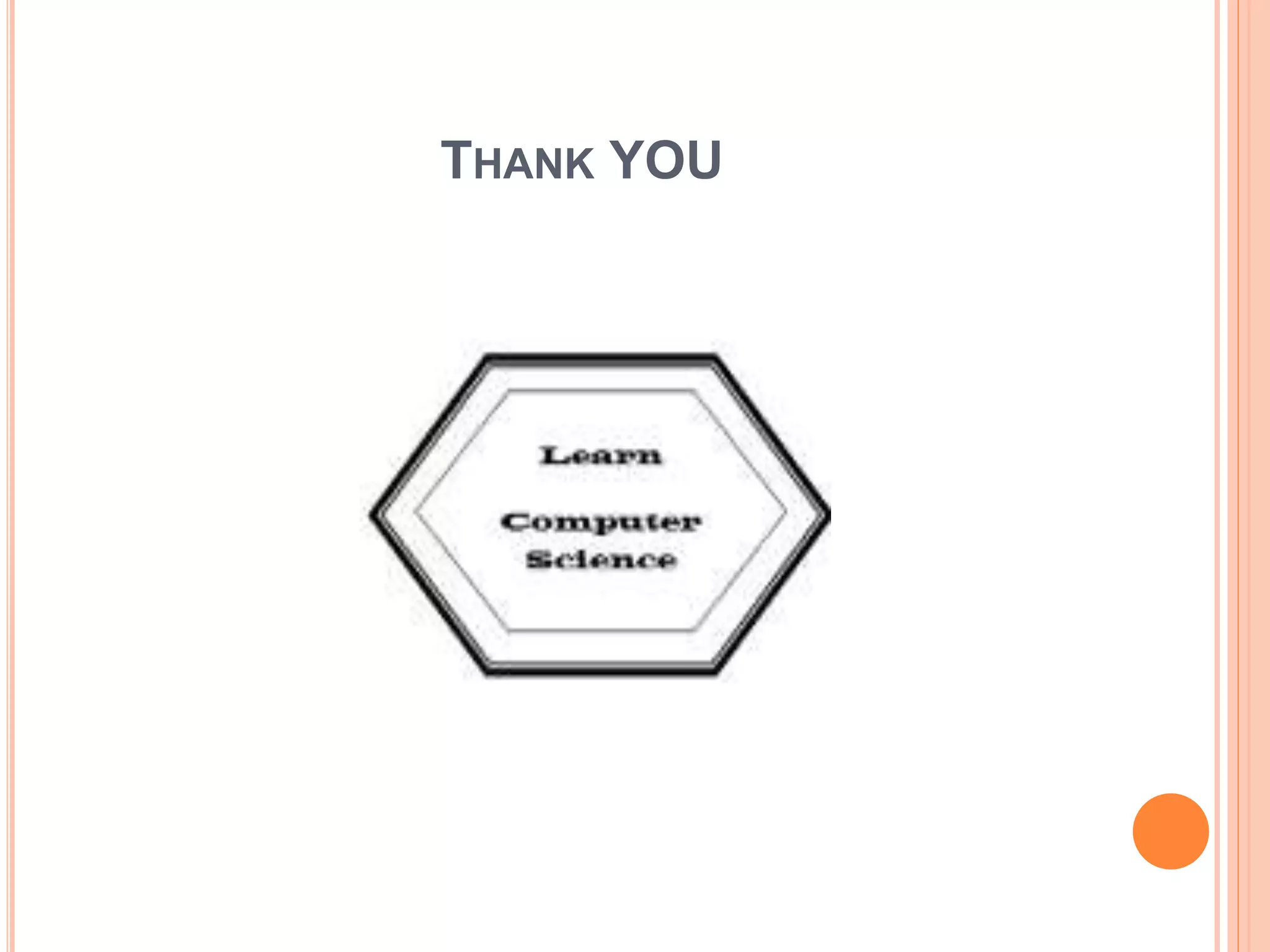This document discusses database management systems (DBMS). It defines a DBMS as a collection of interrelated data and programs used to store and access that data easily and effectively. A DBMS is useful for storing data in an optimized way that removes redundant data, allowing fast retrieval of information. In contrast, a file system is simpler but allows for more data redundancy and less security than a DBMS, which enforces constraints and interrelations between structured data.
